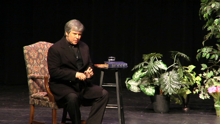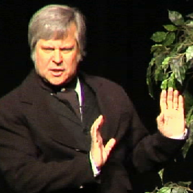-
Old State Capitol State Historic Site—Springfield Lincoln argued 411 appellate cases before the state’s highest court, many at the Illinois State Supreme Court. Lincoln, Herndon and many lawyers also used the Supreme Court law library.
-
Lincoln-Herndon Law Office State Historic Site—Springfield This is the only existing building where Lincoln kept a law office. There was also a Federal Court Room where Lincoln argued Federal Court cases.
-
Mt. Pulaski Courthouse State Historic Site—Mt. Pulaski This is one of only two original 8th Judicial Circuit courthouses still on original foundations.
-
Metamora Courthouse State Historic Site—Metamora This is the other original 8th Judicial Circuit courthouses still on original foundations.
-
Postville Courthouse State Historic Site—Lincoln This is a reproduction of the clapboard Logan County Courthouse in which Lincoln practiced law. The orginal was bought by Henry Ford and moved to Greenfield Village near Detroit.
-
Macon County Historical Society Complex—Decatur Original log cabin courthouse—no longer located at its original downtown location—where Lincoln argued several cases early in his career and which he may have helped whitewash and chink with his cousin John Hanks.
-
Christian County Historical Society and Museum—Taylorville Original wood frame courthouse—no longer located at its original downtown location—which was Lincoln’s last stop on the 8th Judicial Circuit, 1840-1853.
-
Cass County Courthouse Lincoln Courtroom Museum—Beardstown This is the only courtroom in which Lincoln practiced law that is still in use as a courtroom today: Lincoln also argued the famous “Almanac Trial” here.
-
Vandalia Statehouse State Historic Site—Vandalia The original state capitol building is where Lincoln observed the leading lawyers of the state practice before the State Supreme Court and where he obtained his license for practicing law.
-
David Davis Home State Historic Site—Bloomington This beautifully maintained home interprets the exploits of Judge David Davis and Lincoln as circuit riders on the 8th Judicial Circuit and the social, cultural, and political importance of the “lawyer network” in central Illinois. Davis was appointed by President Lincoln to the United State Supreme Court.
-
Kibbe Hancock Heritage Museum—Carthage This museum interprets the only trial where Lincoln lost a client to a hangman’s noose - the Fraime Murder Trial.
-
Vermilion County Museum—Danville This museum houses a reproduction of the law office of Lincoln’s quasi-law partner Ward Hill Lamon. There is a bronze statue of Lincoln the circuit riding attorney. The exterior of the museum reproduces the appearance of the Lincoln-era Vermilion County Courthouse.
-
Dr. Crothers Building & Miller-Davis Building—Bloomington These are the original buildings where Lincoln’s friends shared law offices —attorneys Leonard Swett, William Ward Orme, Harvey Hogg, Ward Hill Lamon, David Davis, Asahel Gridley, William Hanna and John Scott. Lincoln shared office space when he was in town for court while traveling the 8th Judicial Circuit. This site is part of Bloomington’s LFL downtown walking tour.
-
Dr. Hiram Rutherford Home—Oakland Dr. Rutherford played a role in the Matson Slave trial where Lincoln represented a slave owner trying to recover his runaway slave.
-
Most modern Courthouse complexes on the old 8th Judicial Circuit (i.e, Lincoln, Pekin, Tremont, Bloomington, Clinton, Monticello, Urbana, Danville, Paris, Sullivan, Shelbyville, Decatur, Taylorville) plus courthouses in other counties where Lincoln argued a substantial number of cases (i.e., Charleston, Petersburg)—Many of these sites have plaques commemorating Lincoln’s legal activities at the site, though no original buildings remain.
Join Our Mailing List
Lincoln the Lawyer
By Brian “Fox” Ellis
Imagine walking, or better yet riding a horse, on a four hundred mile circuit through Central Illinois. Every small town you come to treats you like a hero. Farmers for miles around come to listen to your jokes and stories, like a carnival or circus come to town, they pay good money for you to listen to their stories and argue with a jury of your peers, many of them friends and relations. People throw open their homes to you, feed you well, offer you a bed, and make you feel like family. If you can imagine this bliss, then you can get an inkling of the joy Abraham Lincoln felt as he rode the eighth judicial circuit court for more than twenty years.
Abraham Lincoln spent six to eight weeks each fall and spring riding the eighth circuit court trying cases in small towns throughout Central Illinois. Most lawyers rode the circuit for a few years and then settled down to practice law in their home town, but Abraham Lincoln rode the circuit for more than twenty years! Clearly, he found great pleasure in this annual migration!
A surprising number of these courthouses are still standing; many of them look very much like they did when Lincoln practiced law. Your family can travel this circuit and get an insider’s glimpse not only of Lincoln the young lawyer, but also of life in Illinois in the middle 1800s.
The Natural
Don’t believe the stereotype of this backwoods country bumpkin practicing law. Lincoln was the highest paid lawyer in America in his day. The railroad companies, one of his regular clients, could have easily hired wealthy lawyers from back East, but Lincoln mastered the art of getting into the jury box, reading the jury and telling them what they needed to hear to sway their opinion. His use of colorful phrases and backwoods humor was his way of connecting with these folks so he could nudge them in the direction he needed them to go. Look beneath the façade.
Secondly, do your homework. Get a good map of the eighth circuit court from your library or go to www.lookingforlincoln.com for information on which courthouses are open which days and hours. To impress your kids, learn a few Lincoln the Lawyer jokes to tell along the way! (Scroll down to read a few of my favorites!) You can retrace the route by car in a few days, something that took Lincoln 6-8 weeks on horseback.
If you like a scavenger hunt, in the 1920’s the Daughters of the American Revolution placed commemorative plaques at all of the courthouses and the county lines where the circuit passed from one county into the next. Many of these plaques are still standing and an article by Guy C. Fraker, published in the Journal of the Abraham Lincoln Association in 2004, will tell you where to find them. Lincoln Circuit Markers
The number one form of transportation in the early days of the eighth circuit court was shanks mare, shoe leather, walking. As lawyers could command better pay they could also afford a horse, maybe even a buggy. Eventually the train came to every county seat and made transportation easier. Along these same lines, as the towns grew so did the courthouses. The first trials were often held in someone’s house, before log court houses like the one in Macon County were built. Eventually clapboard structures like the ones in Taylorville or Postville were constructed. And finally, fine brick and stone structures were built, like the courthouses that still stand in Metamora, Beardstown and Mt. Pulaski.
Along these same lines the complexity of the courts changed. In the earliest days, most cases were simple civil suits, slander and unpaid debts. Juries were often friends and relatives. As these communities grew so did the need for more criminal trials and more grand juries. All of these changes took place in the twenty years that Lincoln was a lawyer riding the eighth circuit court. Lincoln as a lawyer matured along with the courts, the facilities and the modes of transportation.
His pay also increased exponentially as the complexity of the cases increased. In his early days Lincoln was often paid $5.00 or $10.00, while later in his career he was once paid $5,000 for a case involving the Illinois Central Railroad, making him one of the highest paid lawyers in America! Today, $5 or even $5000 might not sound like much, but adjusting for inflation that same $5.00 attorney fee in 1840 would be worth about $86.61 in today's dollars and his $5000 Illinois Central Railroad fee in 1857 would be $102,711.34 today.
Courtroom Highlights
In Beardstown, Illinois, the courtroom where Lincoln tried his famous Almanac Trial is preserved much as it appeared in Lincoln’s day. As a family, you could re-enact the drama with family members playing different roles, arguing the case, playing judge and jury.
Another fun court case to re-enact took place in Macon County. Have you ever heard of a lawyer so good that he could win both sides of a case? This is exactly what Lincoln did. The case involved the stealing of pigs and slander. In David Adkins vs. Robert Hines, it seems that Hines accused Adkins of stealing five sows and five hogs. Stephen Douglas represented Adkins, while Lincoln and John Stuart represented Hines. Hines had been heard to slander Adkins, so Lincoln took a daring course in his arguments, saying YES, Hines had accused Adkins of stealing pigs. But this was not slander, because Hines was a pig thief! Douglas argued that it was impossible for Adkins to have stolen those pigs. He was visiting friends 20 miles away on the day the pigs were stolen. This argument was dismissed and Lincoln won the first round.
Because of Lincoln’s tactics, Adkins was then arrested and tried for being a hog thief. Adkins couldn’t afford a lawyer so the courts appointed one, Abraham Lincoln. Lincoln used the witness that Douglas had found proving that Adkins was out of town, so Adkins was acquitted. The case was settled for the defendant. Not many lawyers can claim to have won the same case twice, winning for both sides!
Following this theme of mischievous pigs, the Taylorville Courthouse once stood on stone pillars. The space under the pillars was a favorite resting place for pigs. It may have also acted like an echo chamber amplifying the hogs. As Abraham Lincoln was trying a case, the pigs were making a terrible fuss, raising such a ruckus, that Lincoln could not be heard. Flustered, he turned to his friend, Judge Davis, and asked that the judge issue a ‘writ of quietus,’ which could be Latin for “please shut up those noisy pigs!” Whether the judge acted on Lincoln’s request and asked the sheriff to remove the hogs is unknown, but there is an 1850 court order for the sheriff to maintain the fence built around the courthouse to keep the pigs out!
The Metamora Courthouse and Mt. Pulaski have both been recently restored and regularly hosts public events, lectures, and dramas.
Spend Some Time at the Office
The new Abraham Lincoln Presidential Library and Museum has a re-creation of his law offices, but to see the real thing visit the Lincoln Herndon Law Offices down the street. The tour guides are knowledgeable and eager to tell stories of Lincoln the Lawyer. His home in Springfield was built with the money he earned as a lawyer. (Ask the ranger about the building of the second floor.) And the old state capitol is a place where Lincoln tried many federal cases.
The Presidential Library, across the street from the museum, has a rich archive of law documents, letters and court transcripts for both the serious and casual researchers.
A Man of Integrity
Some scholars say that Lincoln became a lawyer in large part because it would further his career in politics. The truth is he was a politician first and only later studied for the bar, but his advocacy for the average citizen and his illustrious political career speak volumes for the integrity and commitment he exemplified in both fields.
Travel the Eighth Judicial Circuit to celebrate the real man behind the myth, and enjoy your search for the real Abraham Lincoln.
Lincoln-the-Lawyer Locations*
For those interested in learning more about Lincoln the Lawyer here is a list of sites you may wish to visit:
(Thanks to Bryan Anderson at the ALPLM for this list.)
LINCOLN JOKES!
No article about Abraham Lincoln would be complete without a few of his favorite jokes:
When Lincoln was a young lawyer a gentleman approached him about trying a case. He said he wanted Lincoln to sue a guy for $5. Lincoln politely declined, saying, “I’m sorry sir, with court fees and my fees it would cost more than five dollars to get your money.”
“I do not care how much it costs,” responded the client, “he has owed me this money for a long time and I want to teach him a lesson! I will pay whatever fee you think is fair.”
Lincoln thought about it for a moment and agreed to take the case. “Since it is only five dollars, I will charge you only ten.”
The gentleman thought this fair and paid Lincoln the ten dollars in advance. Lincoln found the young man, gave him five dollars and told him to go pay his debt!
Lincoln often told jokes about his face. Here are two stories he often repeated to friends:
One time while Lincoln was trying a case the prosecuting attorney interrupted him and shouted, “Abraham Lincoln is a two faced liar!” Without missing a beat Lincoln turned to the judge and said, “Honestly sir, if I had another face, do you think I would wear this one?”
Lincoln was walking down the street when an old woman stopped him to say, “You have the ugliest face I have ever seen!” Lincoln said, “I’m sorry ma’am, but there is nothing I can do about my face.”
“Well, yes there is,” she said, “you could stay home so I would not have to look at you!”
When Lincoln was riding the 8th Circuit Court, he usually traveled by horse and buggy, even after trains were built, but occasionally he used the most popular form of transportation, shoe leather. One particularly hot day, as he walked from one town to the next, he peeled off his jacket. It was so hot. He saw a horse and buggy approach and thought about hitching a ride, but hitch hiking was and is a thing that respectable people do not do.
Lincoln waved down the buggy and said to the driver, “Sir, would you be so kind as to take my jacket to the next town?”
The old farmer said, “Why yes, sir… but if I take your jacket to town, how will you know where to find it when you get there?”
“Well,” said Lincoln, I have every intention of riding along with my jacket.”
One cold rainy night Lincoln arrived at an inn with one wish, to get a seat right up next to the fire to warm his bones and dry off his clothes. But when he checked in, he saw a crowd gathered around the fireplace and not a seat to be had. Lincoln hatched a plan.
Smelling fish he asked the inn keeper, “I know I am late, but what was for supper?”
The Innkeeper said, “We had fresh catfish and I believe there is some left over. Could I get you some?”
“That would be mighty kindly of you sir,” said Lincoln, “and why you are at it, could you take some out to my horse when you go out to put him in your stables? You see my horse has a hankering for some catfish. It is his favorite food.”
Lincoln said this just loud enough so the men at the fire had to lean in to hear. They had never heard of no such thing, a horse who eats catfish!?! They had to see this for themselves. SO they followed the innkeeper out to the stables… AND Lincoln got his seat up close to the fire! As a matter of fact he had the whole fire to himself for a while... before these men came back in a little sheepishly, feeling foolish that they had been suckered like that!
Here is a story told about Lincoln that was supposed to have happened in the Taylorville court house: Lincoln was making his case, arguing a point, but obviously the judge thought he was stretching the truth. I think the case involved a wooden wagon. Judge Robbins of Springfield interrupted him and said, “If that is so, I’ll agree to eat this wooden desk right here in front of me!” Without missing a beat Lincoln said, “Well, Judge, if you do eat that desk I hope it comes out the other end a brand new manufactured wagon!”
(*Many of these stories and dozens more are from the CD “Lincoln Tales Tall and True” from Fox Tales International. To order a copy call 309-689-8000.









